Though ‘Reversing Beeching’ is a popular aspiration, the question of whether a line should have been closed is quite different from whether it should now be reopened. Providing new rail infrastructure is an expensive business and can only be justified if it offers significant benefits.
With some justification, the Levenmouth Rail Campaign (LMRC) has for some time argued that there is a strong case to re-open the six-mile branch line to Leven. This was originally part of the line around the coast of Fife’s East Neuk to St Andrews. Following the Beeching Report, this was closed in 1965 although its Leven branch remained open. Nevertheless, British Rail closed the branch to passenger traffic in 1969. It then remained open to freight traffic which ceased about 20 years ago.
The line is still owned by Network Rail which is not required to maintain it as it is out of use under Short Term Network Change (STNC) provisions. Hence, the infrastructure remained in place, albeit neglected and heavily overgrown.
The Levenmouth area includes the communities of Buckhaven, Methil, and Leven which have relatively high levels of unemployment following the closure of coal mines and heavy industry. Although it is only 37 miles from Edinburgh by road, public transport from the area to the city can take almost two hours. With a population catchment of almost 50,000 people, Levenmouth is the largest settlement in Scotland without a rail link. It also has Diageo’s bottling plant and grain distillery − Europe’s largest − which offers significant rail freight potential.
A re-opened Leven branch would therefore serve a sizeable settlement and bring an economic transformation to the area. It would also be relatively cheap to re-open as the base infrastructure is in place and there is no requirement for parliamentary powers or significant land purchase.
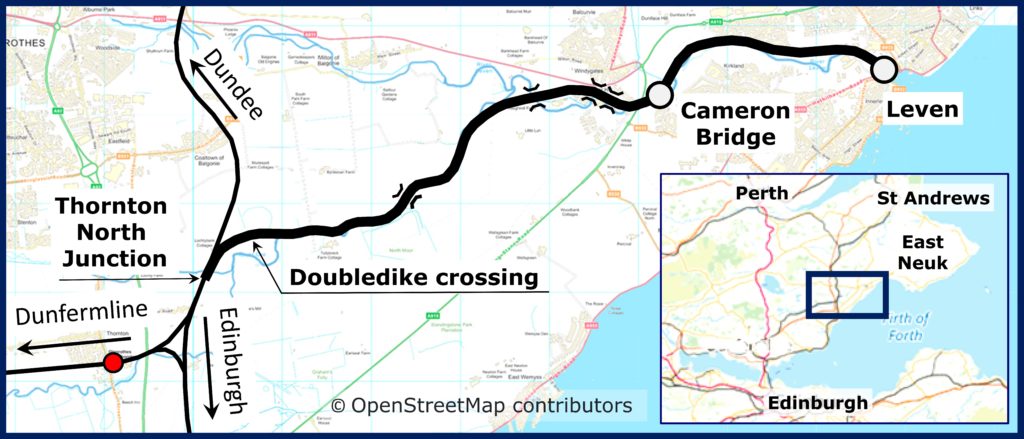
Since its formation in 2014, LMRC had been campaigning to get these arguments accepted. Its case was acknowledged at a Scottish Parliamentary debate in 2017 when Transport Scotland, was instructed to undertake a Levenmouth Sustainable Transport study. Of the various transport options considered, this study concluded that a 30-minute train service from Cameron Bridge and Leven stations “emerged as the highest overall value for money option.”
In August 2019, Scottish Cabinet Secretary for Transport, Michael Matheson, announced the go-ahead for design work to support the reopening of the branch.
Delivering the benefits
To maximise the economic and social opportunities presented by the new Leven rail link, the re-opening project is working closely with the Leven Programme Partnership and the Levenmouth Reconnected Programme.
The Leven Programme is Scotland’s first sustainable growth agreement. This is a partnership of different organisations working across a river catchment to improve the natural environment, support active travel, and create a hub for tourism, business, and industry. Its partners include the Scottish Environmental Protection Agency (SEPA), Scottish Natural Heritage, Sustrans, Fife Council, and Scottish Enterprise. The programme includes a connectivity project to develop a series of paths in the area between Cameron Bridge and Leven and is supported by Transport Scotland’s Places for Everyone programme.
Levenmouth Reconnected is a £10 million fund managed by Fife Council to maximise opportunities presented by the new line by awarding grants to projects which, for example, generate employment or provide community serves.
Network Rail’s senior project sponsor Martin McKinlay explains that a large part of his role is to work with these initiatives and other stakeholders to ensure that the new railway will provide the greatest benefit to the community, particularly in respect of active travel opportunities. In this way he feels that Network Rail’s project team is doing much more than providing a railway as the key requirement is to make sure that it can provide the best benefit to the community.
Martin explained how, in December, the local population were asked for their view on the sites of the new stations as well as active travel links and integration with other transport modes. Due to the Covid situation these events were held online with anyone interested able to book 15-minute video calls with the team. The project website also provided an opportunity for online submissions.
Following this consultation, the locations of the stations were finalised. Leven station is to be the most southerly option next to the bus station and leisure centre. Cameron Bridge station is the most easterly option with access off a busy main road. There is little scope for consultation on station designs as these are being built to a basic template. However, Martin advises that at Leven there are opportunities to provide facilities nearby by, for example, funding to facilitate retail opportunities. This location is also the subject of a placemaking study to create a quality public realm around the station and towards the town centre.
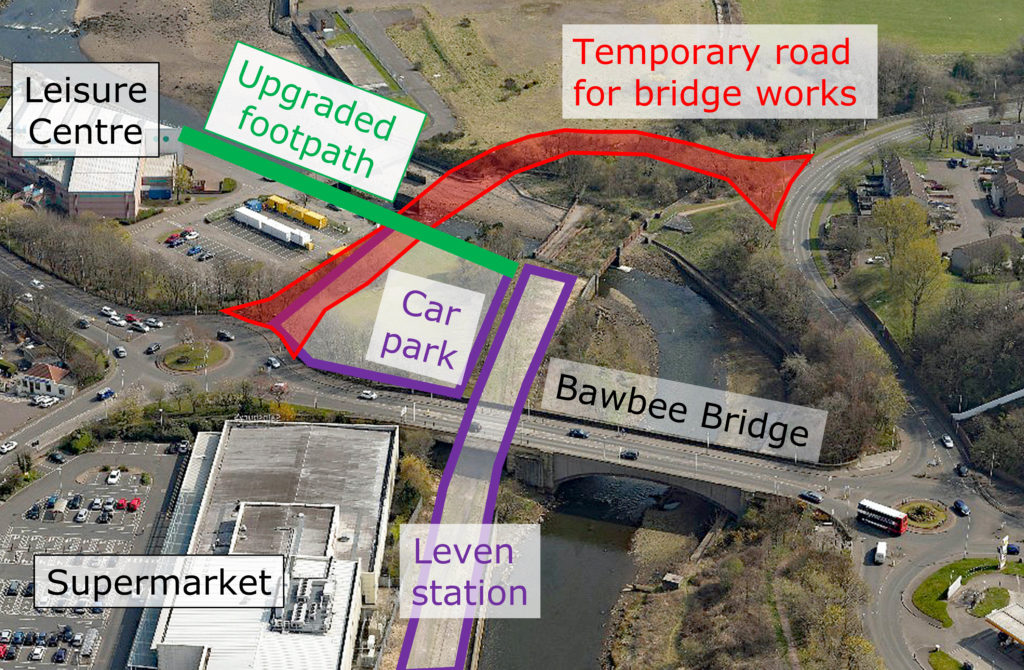
One stakeholder challenge is the need to close established walking and cycling routes along and across the disused line. The strategy is a soft closure of these routes which will not be closed until they have to be. In the meantime, notices advise of the need to be aware of increased risk from work activities. Some of these paths will be replaced by new active travel routes. However, some routes across the line will be closed as the new line will have no level crossings.
The re-opening project
By January, the scope of the project had been defined as: “An affordable, reliable double track railway between Thornton North Junction and Methil Docks and two stations at Leven and Cameron Bridge. Future proofed for electrification with the possibility of freight and heritage connections to an agreed baseline cost, Levenmouth aims to increase capacity on the line to two passenger services an hour and the possibility of two freight trains a day by 2024. The journey time between Leven and Edinburgh is not to be greater than 70 and 75 minutes depending on the route taken.”
Detailed design established that delivering this scope required:
- 9.3 kilometres of electrified double track railway of which the first kilometre from Thornton North Junction is single track, a total of 19 single track kilometres. Due to its curves, the linespeed between the junction and Cameron Bridge will be 45mph.
- Six switch and crossing units.
- Underbridges: five repaired and re-decked; two demolished.
- Route wide track formation work and earthworks.
- Railway systems: signalling (IECC workstation upgrades, interlocking and axle counters, telecoms including one GSMR mast and E&P.
- Six overbridge electrification parapet extensions.
- A station at Cameron Bridge with two x 140-metre-long platforms, lifts, footbridge and a 300-space car park and bus stop.
- A terminating station at Leven with a single island platform 200-metres long and a 90-space car park. The long platform provides an opportunity for stabling and charter operation.
In January, the Scottish Government confirmed that £117 million was to be invested in the Levenmouth railway and that it will open in spring 2024.
Since then, it has been confirmed that the project will also renew the 75-year-old Bawbee Road bridge in Leven at a cost of £8 million. The bridge crosses the site of the new station and is used by 18,000 vehicles each day. It currently has an 18-tonne weight restriction as a result of chlorine contamination and corrosion. Due to the interface between this work and the rail project, it was agreed that the bridge renewal is best done as part of the rail project.
The work requires the provision of a temporary road which includes a temporary bridge over the River Leven. This will be in use from August for the 12 months required for the bridge renewal.
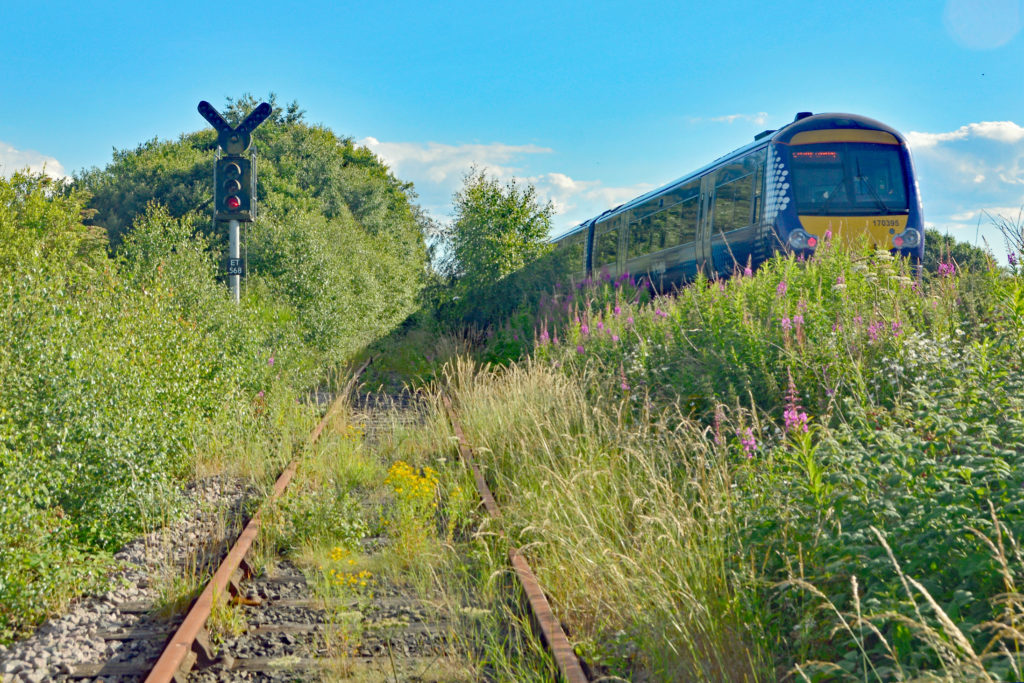
Electrifying Fife
The Levenmouth project includes electrification as it is clearly less expensive to electrify a line as it is built. This is part of a programme to remove diesel trains from Fife passenger services. Whilst Scotland’s Rail Services Decarbonisation Action plan has a long-term plan for full electrification, to replace diesel trains as soon as possible, the Fife lines will initially be partly electrified and operated by Battery EMUs for which procurement is already underway. In addition to the Levenmouth branch, this requires a programme of 104 single track kilometres (stk) of electrification which is planned for completion in December 2025.
In June, work started the first part of this programme to electrify the line between Haymarket and Dalmeny, immediately south of the Forth Bridge. This will see 25 stk electrified by December 2024 at a cost of £55 million, with a feeder station to be provided at Thornton North Junction. From there, other lines will be electrified to Kirkcaldy, Lochgelly, and Ladybank as part of this programme.
In view of the above, after the new Levenmouth lines opens it will be about two years before it can be operated by electric trains. As a result, it is possible that the line might be wired as part of the later Fife electrification works given the security issues associated with delay in energising the Levenmouth branch.
Project 13
The project is one of a small number of Network Rail projects being delivered in accordance with the Project 13 delivery model. This is an initiative led by the Institution of Civil Engineers which is based on a partnership enterprise model rather than traditional transaction arrangements between infrastructure owners and suppliers. The model has the following five key features:
Governance – owners establish rules and processes to guide their interactions with suppliers.
Organisation – owners engage the right suppliers at the right time and integrate them into the team.
Integration – owners must develop culture, practices, and systems appropriate to the programme.
Capable owners who must have the capability to define outcomes, articulate technical requirements, manage stakeholders, put infrastructure into operation and work collaboratively with whole team.
Digital transformation – develop new business models to take advantage of new technology.
The intention is to provide a greater focus on infrastructure project outcomes rather than deliverables. The deliverables are defined by the previously mentioned project scope whereas outcomes are driven by adding value. A key outcome is making “Levenmouth a better place to live, work and play.” As an example, 14 mentors from the project’s eight partners have engaged with 250 young people in a STEM (Science, Technology, Engineering and Maths) initiative.
For the Levenmouth project, the enterprise partners are Transport Scotland as investor, Network Rail as owner, and AmcoGriffen, Atkins, Babcock, BAM, Siemens, SPL, Story, QTS, Rail Safety Accreditation Scheme (RSAS) as suppliers. Atkins is the designer and BAM is the principal contractor.
The project is supported by a steering group of representatives from Network Rail, the framework contractors, and the designer. Its role is to provide strategic leadership and ensure the project is delivered in accordance with Project 13 principles. There are also six integrators who are key individuals from different enterprise partners and are accountable for project delivery. These are: design and engineering assurance – Atkins; planning and control – SPL; operation and construction – Network Rail; project management – BAM; commercial – Babcock and safe delivery – Story.
On site
Work to re-open the Levenmouth branch started with devegetation work late in 2020 which was followed by the start of site investigation work early in 2021. In July, work started to remove the old disused track and other redundant infrastructure. This track was all reused, recycled, or repurposed on the project with much donated to heritage railways in Scotland.
During a weekend disruptive possession in March, work was undertaken at Thornton North Junction. This is a single lead junction which required heavy maintenance and did not need to be remodelled. Though technically operational, this junction last saw regular use between 2012 and 2015 when new sidings were provided near Doubledikes level crossing, one kilometre from the junction, to load coal from a nearby opencast mine.
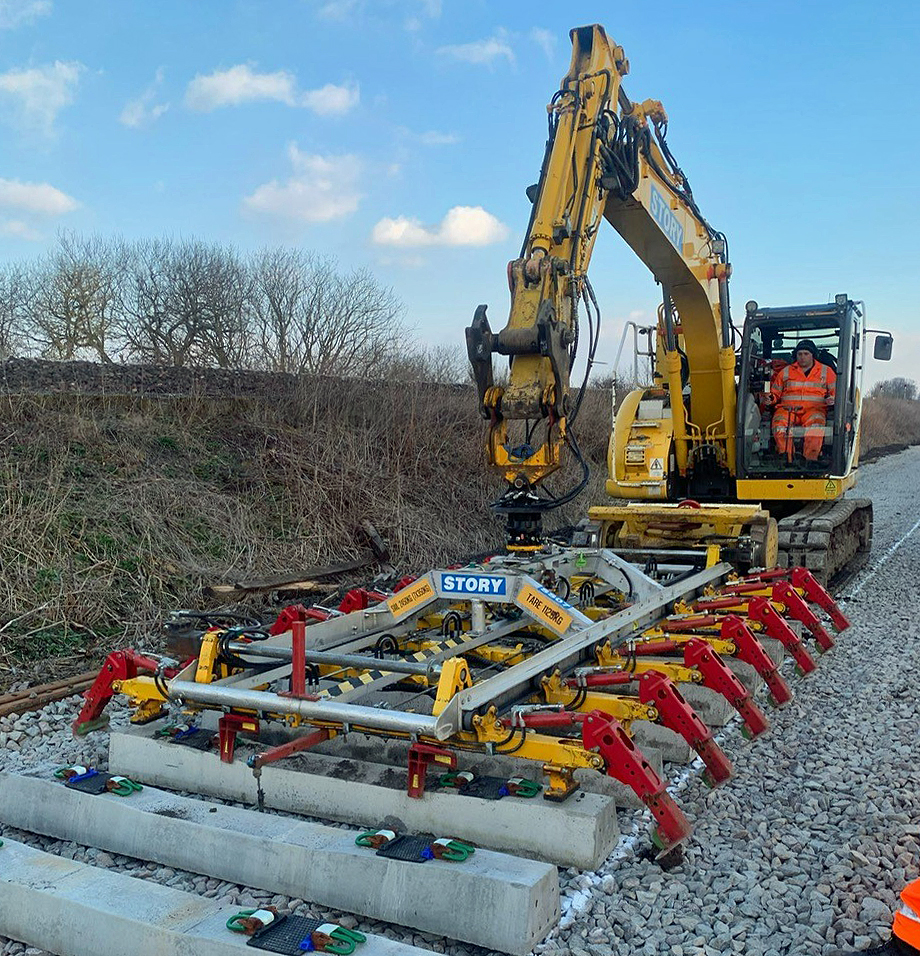
March also saw the first mile of track from the junction being laid and the establishment of the first construction compounds.
In May, I was glad of the opportunity for a site visit to see the work done and understand the challenges of the work to re-open the line. My visit was hosted by the project’s operation and construction integrator, Joe Mulvenna and senior communications manager, Owen Campbell, both of Network Rail.
Whilst walking alongside the newly laid track, Joe explains that, in May 2021 Thornton Yard took delivery of the 16,000 sleepers needed for the project and became a virtual quarry for the 80,000 tonnes of ballast that the project will require. 13,500 tonnes of which was used for the initial track laying.
Our walk takes us across Doubledikes level crossing. A sign at the crossing advises that work is now underway to create the Levenmouth rail link.
Although an established walking and cycling route, it is a private crossing and is not one of Fife’s adopted core paths. As there are to be no level crossings on the line, this route will be closed unless additional funding can be found for a bridge.
Joe also explains the environmental challenges. For much of its route, the line follows the sometimes-steep valley of the River Leven which it crosses four times. Although there are no major environmental issues, the local ecology, in particular otters, badgers, and bats must be protected. Invasive species including Hogweed and Himalayan Balsam are also a problem. The project has established environmental buffers zones within which no work can take place unless authorised by an Environmental Clerk of Works.
The original line was a two-track railway. Although it has no major earthworks, there are some steep slopes such as those above the track in the river valley near Tullybrek. Construction of earthworks to current standards at such locations requires the purchase of some parcels of land.
We then visit the station sites at Leven and Cameron Bridge. At Leven, the old line continued over a bridge over the River Leven to Methil docks which was once the largest coal exporting port in Scotland. Although there are no plans to extend the line, the station design allows for this eventuality. Whilst standing under the Bawbee bridge at the new station site, it is clear why the bridge works need to be completed before the new line opens. Owen explains how the new station is to be an integral part of the town centre offering an improved public realm and potential for new facilities.
The new Cameron Bridge station is off the busy A915 road which runs through Fife’s East Neuk to St Andrews. Hence the station is likely to be a rail head for the area and so has a 300-space car park with land available for its expansion, if necessary. Active travel options to the station from the north and from the distillery site to the south are currently being developed. This includes the use of one of Fife’s adopted core paths which crosses the railway at Duniface and so will require a bridge if it is to be maintained.
Although the location of the station was subject to public consultation, another factor was the nearby Diageo distillery which is a lower tier COMAH (Control of Major Accident Hazards) site. As a result, the station had to be a minimum distance from this site.
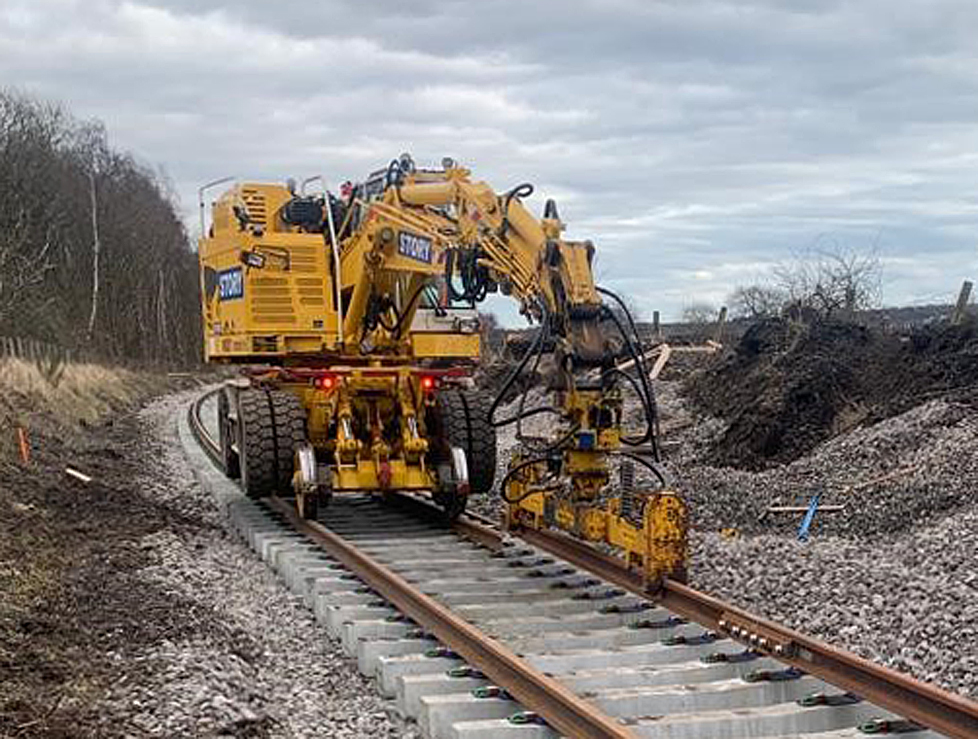
Between Cameron Bridge and Leven is the Fife Heritage Railway’s premises at Kirkland. Part of this is being rented to the project for its main site offices. However, this did not stop the railway holding its annual Leven Car Rally there, for which Network Rail sponsored the overall winner’s prize.
A connection is to be provided at Kirkland to provide passive provision for heritage and freight use. However, it seems that the line’s greatest potential for freight will not be realised as Diageo have indicated that it wishes to use Thornton Yard for its rail freight.
The final part of my visit is to see the work on a river underbridge which is one of five that needs repairs. Joe advises that the bridges are generally in good condition. They all need grit-blasting back to bare metal, recoated with a special paint system and new timber decks installed. This work requires the bridges to be fully encapsulated.
A much-needed railway
With much work already done, it is clear that the new railway is coming. This will become even more evident when track laying starts in October.
Everyone we spoke to about this project advised that, in their experience, it is rare for everyone affected by a railway project to positively want it to happen. Hence the project has total support from the community. The Project 13 approach should build on this support to ensure that the new railway will provide the greatest benefit to the community with initiatives such as its STEM engagement.
As an example of the benefits offered by the new railway, Fife Council anticipate that it will generate investment equivalent to its £117 million construction cost.
Although such benefits were clear to those who have campaigned for the re-opening for many years, it takes time to justify and approve the large cost of re-opening a railway. The railway will open during the tenth anniversary year of the LMRC campaign group. When the line does reopen, it seems certain that it will achieve its outcome of making “Levenmouth a better place to live, work and play.”
Rail Engineer will return to Levenmouth to report on the progress with this new railway.

